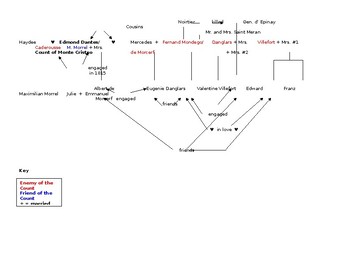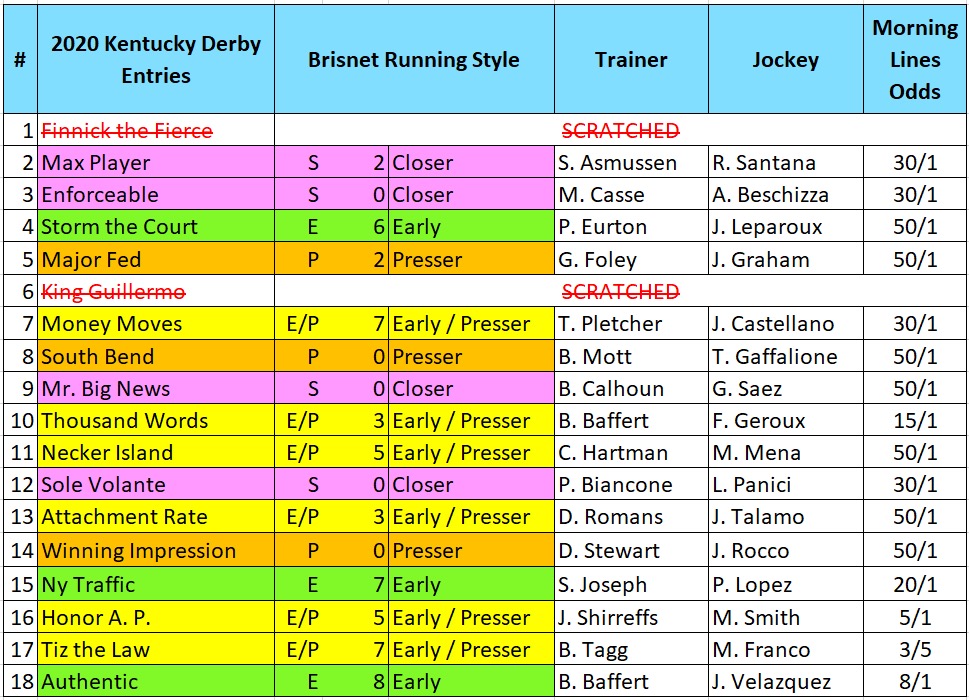The Count Of Monte Cristo: Character Analysis And Plot Review

Table of Contents
Edmond Dantès: From Innocent Sailor to Calculating Count
Edmond Dantès's transformation is the heart of The Count of Monte Cristo. His journey from a naive, hopeful young man to the cunning and wealthy Count of Monte Cristo is a compelling study in human resilience and the corrupting influence of betrayal.
Edmond's Transformation
Edmond's descent into darkness and subsequent rise as the Count are fueled by several key events:
- Betrayal by Fernand Mondego, Danglars, and Villefort: These three men, driven by envy, ambition, and self-preservation, orchestrate Edmond's wrongful imprisonment, shattering his dreams and leaving him to rot in the Chateau d'If. This betrayal forms the core of Edmond's desire for revenge.
- His wrongful imprisonment and the harsh realities of Chateau d'If: The brutal conditions of Chateau d'If, a notorious prison, strip Edmond of his innocence and force him to confront the darkest aspects of human nature. This experience hardens him, fueling his thirst for retribution.
- The transformative power of knowledge and wealth acquired on the island: Imprisoned alongside Abbé Faria, a wise and learned priest, Edmond gains access to a vast store of knowledge, including finance, languages, and swordsmanship. This knowledge, combined with the treasure Abbé Faria reveals, becomes the foundation of his transformation into the Count of Monte Cristo.
- His meticulous planning and execution of his revenge: The Count's revenge is not impulsive; it is carefully planned and executed with surgical precision. He systematically dismantles the lives of his enemies, revealing the extent of his intellect and determination.
Edmond's Morality
The ethical implications of Edmond's actions are central to the novel. Is his revenge justified? Does it ultimately lead to redemption or further destruction? This question is central to the understanding of The Count of Monte Cristo.
- The collateral damage inflicted upon innocent individuals: Edmond's quest for revenge causes significant suffering to innocent people connected to his enemies. This raises crucial questions about the morality of vengeance.
- The blurring lines between justice and vengeance: The novel explores the fine line between seeking justice and enacting vengeance, highlighting the potential for both to become indistinguishable.
- Edmond's capacity for compassion and forgiveness: Despite his thirst for revenge, Edmond demonstrates compassion and even forgiveness towards certain individuals, highlighting the complexity of his character.
- His eventual reconciliation with some characters: In the novel's conclusion, Edmond finds reconciliation with some characters, suggesting a potential for redemption, even after the horrific events he endures and inflicts.
Key Antagonists: Fernand, Danglars, and Villefort
The antagonists of The Count of Monte Cristo are as compelling as Edmond himself, each driven by their own flaws and ambitions. Their actions and fates contribute significantly to the overall narrative of the novel.
Fernand Mondego: The Jealous Rival
Fernand Mondego's betrayal stems primarily from jealousy and ambition.
- His envy of Edmond's relationship with Mercédès: Fernand's unrequited love for Mercédès fuels his resentment toward Edmond and motivates his participation in the plot to ruin him.
- His ambition and desire for social climbing: Fernand's ambition and his desire to climb the social ladder lead him to collaborate with Danglars and Villefort, sacrificing his moral compass for personal gain.
- His ultimate downfall and public disgrace: Fernand's actions ultimately lead to his downfall and public disgrace, serving as a cautionary tale of the consequences of unchecked ambition and betrayal.
Danglars: The Opportunistic Banker
Danglars, a ruthless and opportunistic banker, epitomizes greed and manipulation.
- His ruthless pursuit of wealth and power: Danglars's insatiable desire for wealth and power drives his betrayal of Edmond and his willingness to exploit others for his own benefit.
- His betrayal of Edmond and his subsequent downfall: His betrayal of Edmond is a pivotal moment in the novel, setting in motion the chain of events that leads to his own demise.
- The consequences of his avarice and treachery: Danglars's ultimate fate serves as a reminder of the devastating consequences of unchecked greed and treachery.
Villefort: The Corrupt Prosecutor
Villefort, the ambitious prosecutor, represents the moral compromises individuals make for power and status.
- His ambition and desire to maintain his social standing: Villefort's desire to maintain his position and social standing leads him to participate in the conspiracy against Edmond, jeopardizing his own integrity.
- His involvement in Edmond's wrongful imprisonment: Villefort's role in Edmond's imprisonment is a significant act of injustice and underscores his moral failings.
- His internal conflicts and ultimate fate: Villefort's internal conflicts and ultimate fate highlight the devastating consequences of compromise and the enduring power of guilt and conscience.
Plot Review: A Masterpiece of Intrigue
The plot of The Count of Monte Cristo is a masterpiece of intricately woven suspense and carefully crafted revenge.
The Structure of Revenge
Edmond's revenge is not merely a series of violent acts; it is a meticulously planned and executed operation designed to dismantle his enemies.
- The methodical dismantling of his enemies' lives: Edmond methodically targets each of his enemies, exploiting their weaknesses and using their own ambitions against them.
- The use of subtle manipulation and calculated risks: He employs subtle manipulation, calculated risks, and an intricate web of deceit to achieve his goals.
- The unfolding of the plot and its suspenseful nature: The narrative's suspenseful unfolding keeps readers captivated as Edmond's plans unravel, revealing the full scope of his revenge.
Themes and Motifs
The Count of Monte Cristo explores several enduring themes:
- The exploration of the human capacity for both good and evil: The novel delves into the complexities of human nature, highlighting the capacity for both profound good and unspeakable evil.
- The consequences of unchecked ambition and greed: The fates of Fernand, Danglars, and even Villefort serve as stark reminders of the devastating consequences of unchecked ambition and greed.
- The power of forgiveness and second chances: Despite the horrors he endures, Edmond ultimately demonstrates a capacity for forgiveness, offering a glimmer of hope for redemption.
The Ending and its Interpretations
The ending of The Count of Monte Cristo remains open to interpretation.
- The ultimate triumph of Edmond Dantès: Edmond achieves a degree of triumph, exacting his revenge and securing his future.
- The ambiguous nature of his redemption: The extent of Edmond's redemption, however, remains ambiguous, leaving readers to ponder the true cost of his actions.
- The lasting impact of his actions: Edmond's actions leave a lasting impact on those around him and highlight the far-reaching consequences of vengeance.
Conclusion
The Count of Monte Cristo offers a captivating exploration of human nature, weaving a complex tapestry of revenge, betrayal, and redemption. Through the detailed character analysis and plot review provided in this article, we've uncovered the layers of intrigue and moral ambiguity that make this classic novel so enduring. Edmond Dantès's journey serves as a powerful reminder of the consequences of our actions and the enduring power of hope and forgiveness, even in the face of immense suffering. If you haven't already experienced the thrilling adventure of The Count of Monte Cristo, we strongly encourage you to delve into this literary masterpiece and discover its timeless appeal for yourself. Start your own exploration of The Count of Monte Cristo today!

Featured Posts
-
 On Set Bradley Cooper Directs Will Arnett For Is This Thing On In Nyc
May 04, 2025
On Set Bradley Cooper Directs Will Arnett For Is This Thing On In Nyc
May 04, 2025 -
 Russell Westbrooks Stellar Play A Look At Nba Reactions From The Nuggets Warriors Game
May 04, 2025
Russell Westbrooks Stellar Play A Look At Nba Reactions From The Nuggets Warriors Game
May 04, 2025 -
 The Untold Story Of Peter Greens Departure From Fleetwood Mac
May 04, 2025
The Untold Story Of Peter Greens Departure From Fleetwood Mac
May 04, 2025 -
 Stepfather Indicted On Murder And Other Charges In Teens Torture
May 04, 2025
Stepfather Indicted On Murder And Other Charges In Teens Torture
May 04, 2025 -
 Kentucky Derby Festival Georgetown Woman Takes The Crown In 2025
May 04, 2025
Kentucky Derby Festival Georgetown Woman Takes The Crown In 2025
May 04, 2025
Latest Posts
-
 Kentucky Derby 2025 Pace Prediction Key Horses And Their Impact
May 05, 2025
Kentucky Derby 2025 Pace Prediction Key Horses And Their Impact
May 05, 2025 -
 The 2025 Kentucky Derby Pace Scenarios And Their Implications
May 05, 2025
The 2025 Kentucky Derby Pace Scenarios And Their Implications
May 05, 2025 -
 Examining The 2025 Kentucky Derby Anticipating The Winning Pace
May 05, 2025
Examining The 2025 Kentucky Derby Anticipating The Winning Pace
May 05, 2025 -
 Kentucky Derby 2025 Factors Influencing The Race Pace
May 05, 2025
Kentucky Derby 2025 Factors Influencing The Race Pace
May 05, 2025 -
 Colonial Downs Stones Big Announcement The Virginia Derby Is Coming
May 05, 2025
Colonial Downs Stones Big Announcement The Virginia Derby Is Coming
May 05, 2025
